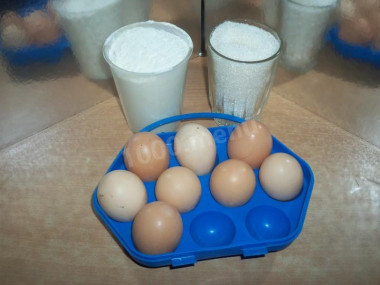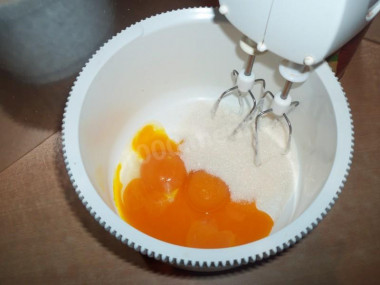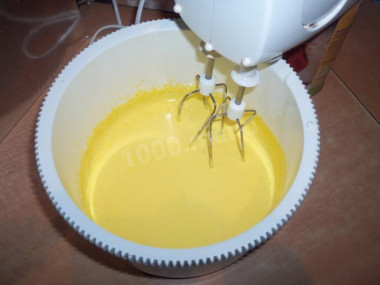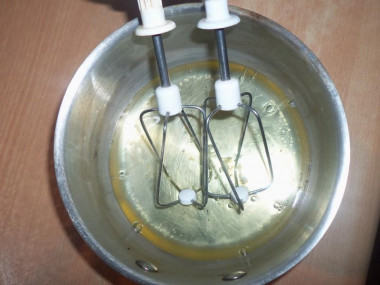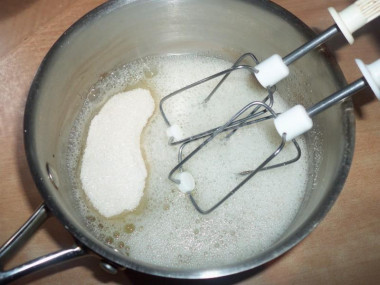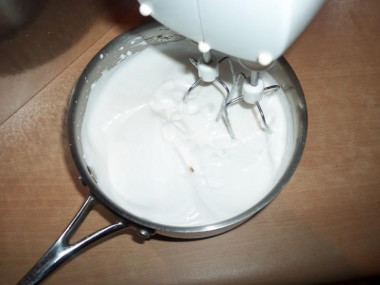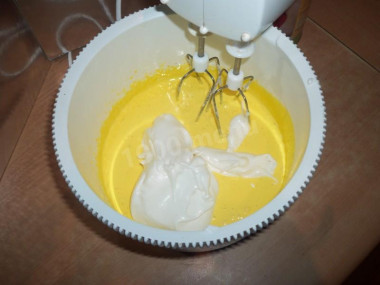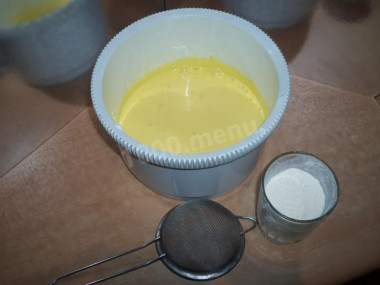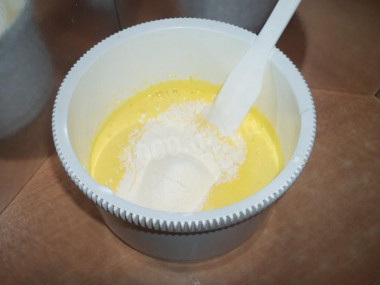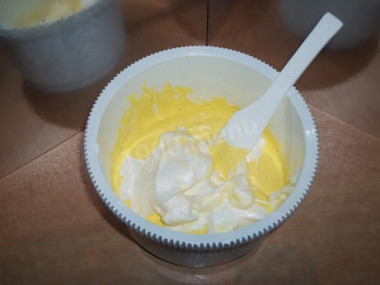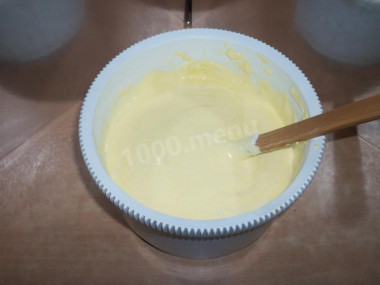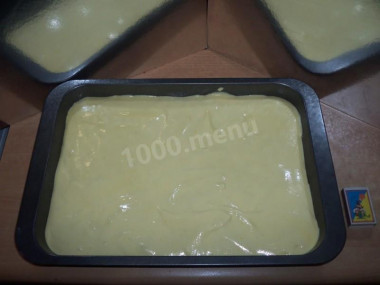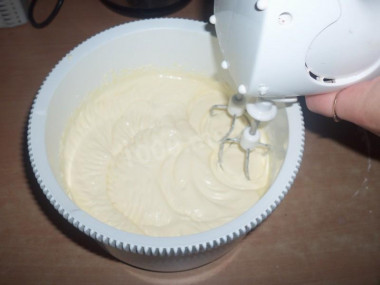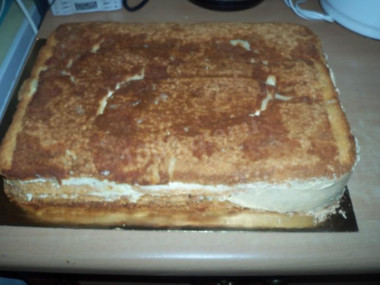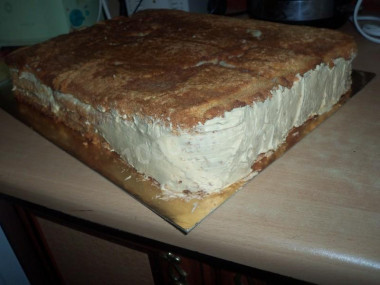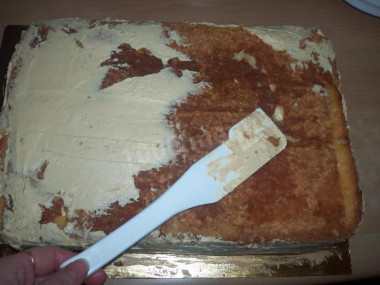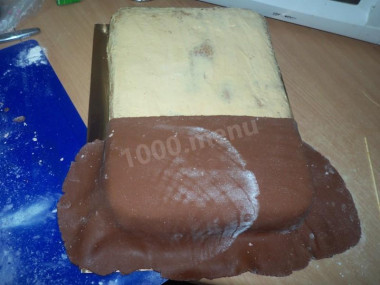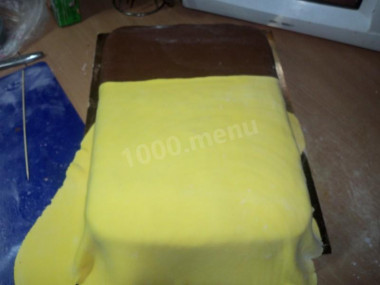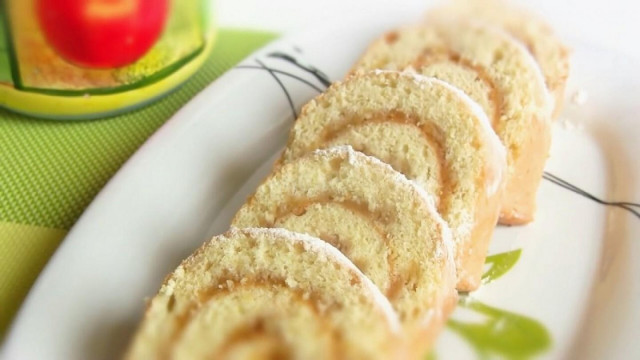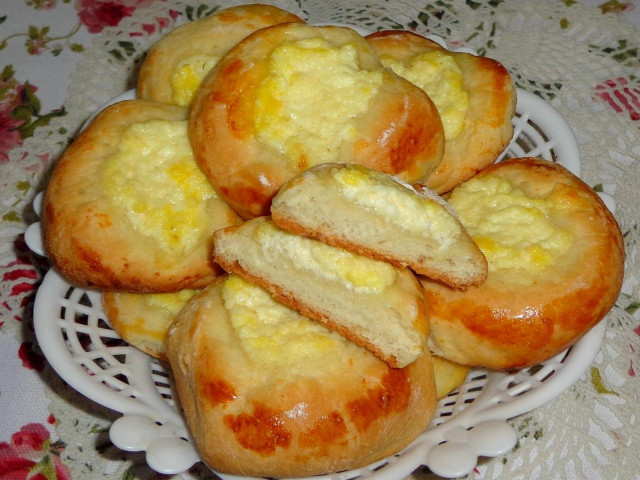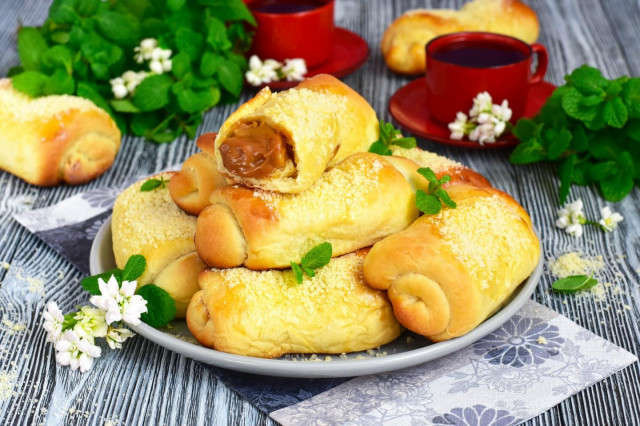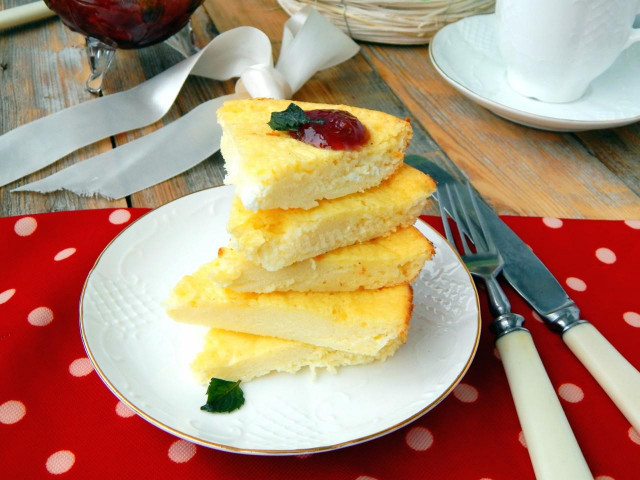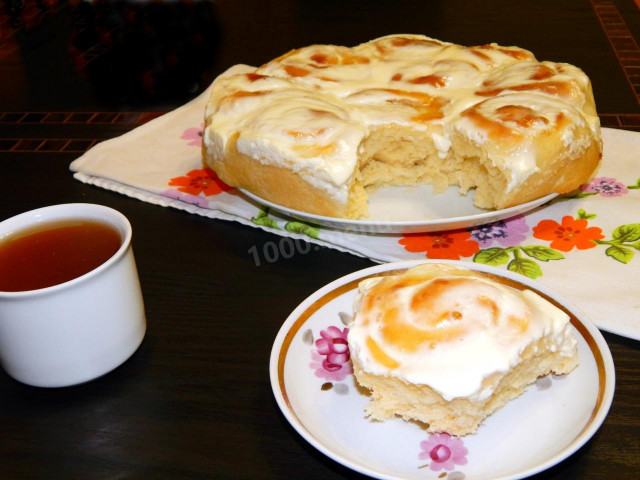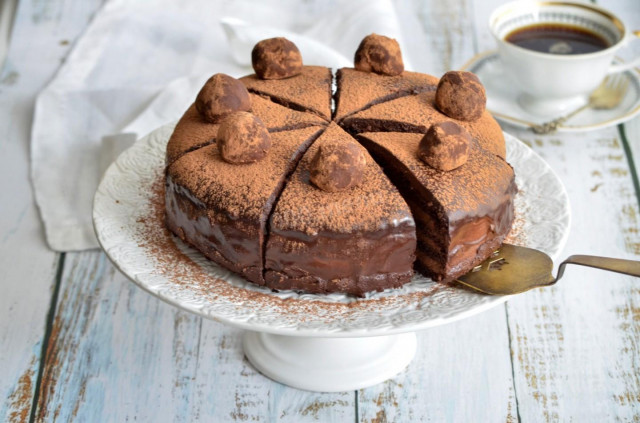Composition / ingredients
Step-by-step cooking
Step 1:
The preparation of the biscuit is described by half of the composition! Separate the whites from the yolks. Separate very carefully so that not a drop of yolk gets into the whites, otherwise the whites will not climb. Also, the bowl in which the proteins will be whipped should be clean, without traces of fat. It is better to wipe it with a paper towel soaked in vinegar or lemon juice.
Step 2:
Put the yolks in a bowl, add half the sugar and vanilla sugar. Rub the yolks well with sugar until they increase in volume and whiten the mass.
Step 3:
The yolks can be ground with a mixer.
Step 4:
Place the whites in a clean bowl and beat at low or medium speed of the mixer until a light fluffy foam forms.
Step 5:
Increase the speed of the mixer to medium or maximum (the speed depends on the power of the mixer) and, without stopping whipping, pour sugar in a thin stream.
Step 6:
When all the sugar is added, continue whipping until when tilting (or turning) the bowl proteins will not pour out of it.
Step 7:
Add a third of the whipped whites to the yolks
Step 8:
And gently, from bottom to top, mix.
Step 9:
Add the sifted flour to the yolk mass and mix well.
Step 10:
Then add the remaining whipped whites and very gently, with movements from bottom to top, as if lifting layer by layer, mix the dough.
Step 11:
The form is filled with dough no more than 2/3 of the height, since when baking the biscuit increases in volume by about 1.5 times. Put the dough into a mold and level the surface. Bake the sponge cake in a preheated 180 ° C oven for about 30-35 minutes.
Step 12:
During baking, it is advisable not to open the oven door for the first 20-25 minutes, otherwise the biscuit may fall off. But, if there is no need, it is better not to open the door during the entire time of baking the biscuit. The biscuit is ready, if it shrinks a little, the edges move away from the walls of the mold and when you lightly press it with your fingers, the biscuit springs, and the hole is quickly restored.
Step 13:
Carefully remove the biscuit from the mold, put it on the grill and let it cool. Cover the cooled biscuit with a napkin or paper towel and let it lie at room temperature for 8-12 hours (then, when soaked with syrup, the biscuit will not get wet and crumble when sliced). While our cake is cooling down, we will prepare the cream in the meantime.
Step 14:
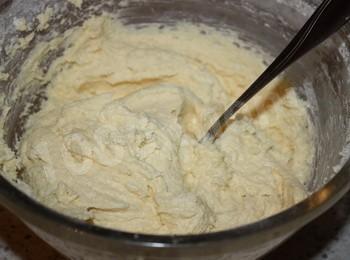
We need to prepare two types of cream, we will have one for cakes, and with the second we will lubricate the top and sides of the cake, thus preparing it for mastic. The first cream is sour cream. Beat the sour cream with a mixer and add a little granulated sugar. As soon as the sugar has melted, the cream is ready. The second cream is butter cream with condensed milk. Soft butter is beaten down, gradually introducing condensed milk.
Step 15:
When the cake has cooled down, cut it into cakes, soak it with syrup, and smear the cakes with each other.
Step 16:
Grease the sides with butter cream
Step 17:
And the top and put in the refrigerator.
Step 18:
Roll out a sheet of brown mastic and cover the bottom of the cake, it will be pants.
Step 19:
We cover the top with yellow mastic. Cut off the excess.
Step 20:
We make a shirt out of white mastic and squeeze out two circles for SpongeBob's eyes. Next, we shape the top of the cake, in the form of waves, thus making a sponge. Well, small details, eyes, tie, mouth, nose, handles, legs, etc ...))))) To make the mastic shine, it needs to be covered with a brush with a solution of honey and vodka (1:1)...That's how the Sponge Bob turned out !!!
Calorie content of the products possible in the composition of the dish
- Sour cream of 30% fat content - 340 kcal/100g
- Sour cream of 25 % fat content - 284 kcal/100g
- Sour cream with 20 % fat content - 210 kcal/100g
- Sour cream of 10 % fat content - 115 kcal/100g
- Sour cream - 210 kcal/100g
- Chicken egg - 157 kcal/100g
- Egg white - 45 kcal/100g
- Egg powder - 542 kcal/100g
- Egg yolk - 352 kcal/100g
- Ostrich egg - 118 kcal/100g
- Whole durum wheat flour fortified - 333 kcal/100g
- Whole durum wheat flour, universal - 364 kcal/100g
- Flour krupchatka - 348 kcal/100g
- Flour - 325 kcal/100g
- Granulated sugar - 398 kcal/100g
- Sugar - 398 kcal/100g
- Condensed milk with sugar - 324 kcal/100g
- Butter 82% - 734 kcal/100g
- Amateur unsalted butter - 709 kcal/100g
- Unsalted peasant butter - 661 kcal/100g
- Peasant salted butter - 652 kcal/100g
- Melted butter - 869 kcal/100g
- Powdered sugar - 374 kcal/100g
- Food coloring - 0 kcal/100g
- Marshmallow - 328 kcal/100g



